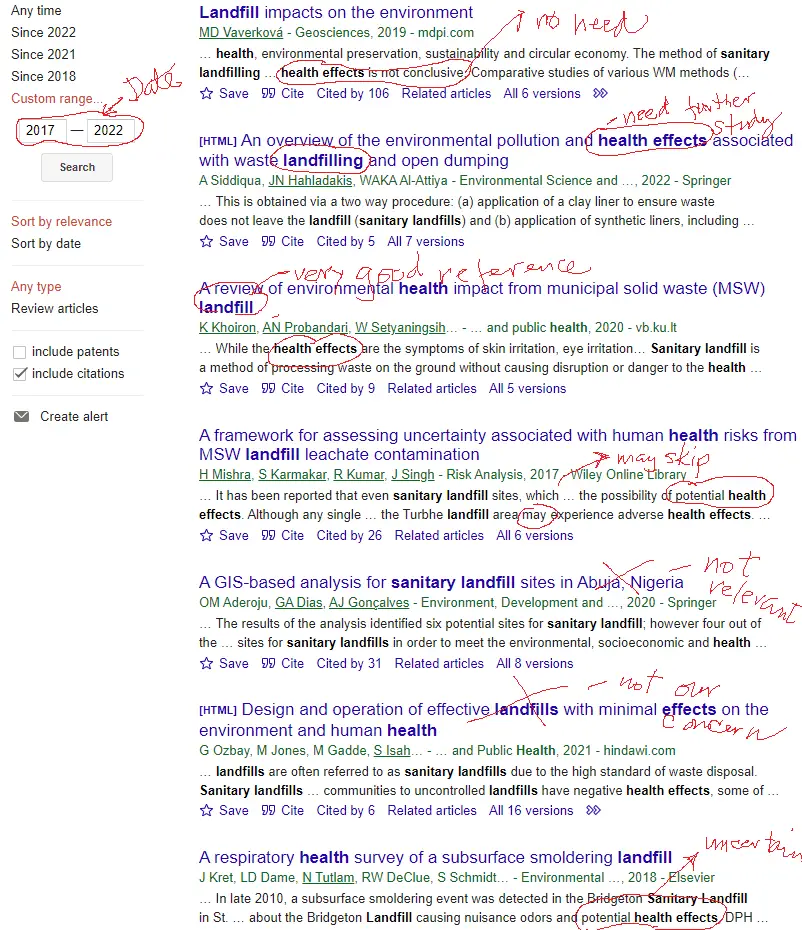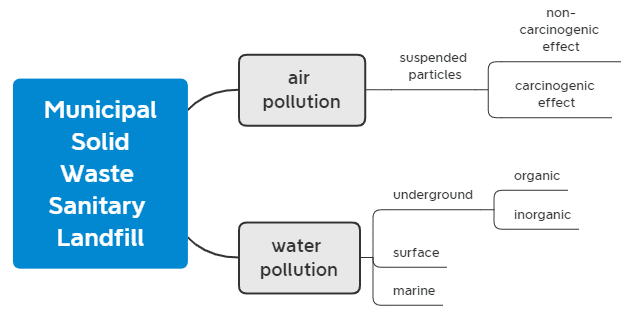Many students, as well as teachers inclined in doing research, find the literature review part of the research process daunting. Reviewing the literature becomes much more challenging if you are hard pressed with time and the need to produce an output within the shortest time possible. This article will walk you through the process of how to write a literature review.
Here’s how I do it after years of engaging in research consultancies now and then.
Clarify the objectives of your study or research
One cannot just jump and write anything without a good grasp of the research project’s intention, i.e., the research objectives of the study.
Let’s have a concrete example of a research objective that will serve as the focus of a literature review.
Research Objective
Determine the health effects of the city’s sanitary landfill to adjacent, downstream communities.
Having this research objective clearly in our mind, we can then search for related literature on this topic. It’s easy to figure out what we want in the huge collection of research literature found in popular databases because we clearly know what we want to review—health effects of the sanitary landfill to people.
How to Write a Literature Review Using Google Scholar
Our easy go-to destination for relevant literature would be Google Scholar, as this scientific database has an extensive collection of research abstracts, and even full papers in open-access journals. You can set Google Scholar to return only the most recent literature, which may range from 3 to 5 years.
We can use the following keywords to get us started on Google Scholar:
health effects of the sanitary landfill
Ten articles come up after setting the date to 2017-2022 to cover research literature for the last 5 years upon entering the above keyword.
Now, we can just mark the relevant literature in the top 10 (figure 1) article links as our potential reference for the study. Right click and open in a new tab the relevant articles after reading the meta description or snippet of information after the link. Read the linked abstract in the newly opened tab.

After reading the abstract, ask yourself if the summary of the research paper provides information on what you want to know.
For example, referring to the first article returned in Figure 1, titled “Landfill impacts on the environment,” the meta description that summarizes the article’s content, “…health effects is not conclusive.” Hence, I need not read the paper as I am after the health effects of the sanitary landfill (encircled). That study most likely just explored the topic without noteworthy findings.
The second article link, which is recent (2022), appears to be a better candidate for my literature review. I need to see the findings of this write up because I could not judge the content just by reading the meta description.
Right clicking it, the last paragraph of the abstract tells some of the health effects of the landfill, particularly health impacts due to air and water pollution. The article is open-access, and reading the whole article would give me an idea about the method used to arrive at the conclusions. I can adopt such a method to find out the situation in the places I’d like to do a similar study.
The third article in line is one of the best articles that you need in a literature review? Why do I say that?
It is a very good reference because of the term “review” of municipal SWM environmental impacts in the article’s title. Somebody did a review of the health effects of the sanitary landfill and even enumerates some of them in the meta description. You definitely need to read articles with “review” in the title and the meta description because it can save you time looking for information on the health effects of the sanitary landfill.
The rest of the list seems to be irrelevant to the topic I have in mind, hence, I can skip the rest and scroll down to examine the other links.
Mind Mapping the Contents of the Literature Review
You can organize the contents of your literature review using a mind map. Write the set of keywords related to your literature review on the health effects of the sanitary landfill.
Here’s an example of a mind map for the proposed study discussed in the previous section using the keywords I found in the two articles with health effects I’ve come across in Google Scholar.

The mind map clarifies the important components of the sanitary landfill in relation to health effects. It shows the vehicle of emissions or leachate (e.g. water or air), location (underground, surface, and marine), in what form (suspended particles, organic or inorganic), and effects (non-carcinogenic and carcinogenic).
Before I did a literature review, I could only hypothesize on the health effects of the sanitary landfill. As I read the literature, a concept develops. Now, this process helps me direct towards a particular focus in my proposed study. Eventually, I will come up with a conceptual framework to guide the conduct of the study.
Questions that can direct my research activity arise as I review the literature, such as the following questions:
Which sanitary landfill emission shall I focus my research on? Will I focus it on air pollution or water pollution? Both these concerns imply health effects.
Further, if I decide to study air emissions from the sanitary landfill, I can choose from carcinogenic and non-carcinogenic effects.
Now, I have a better idea of what to write as my introduction and the method or methodology based on the articles I have reviewed.
Summary
Writing the literature review requires a clear research objective that will guide you in your search for related literature. Google Scholar is a comprehensive database that efficiently returns related articles using a specific phrase or keyword. To get a clear grasp of scientific literature, you can build a mind map that will show the components of the specific keyword used in reviewing the literature. The mind map helps you focus research activity and the method to adopt to provide data for analysis.
©2022 October 23 J. P. A. Regoniel


